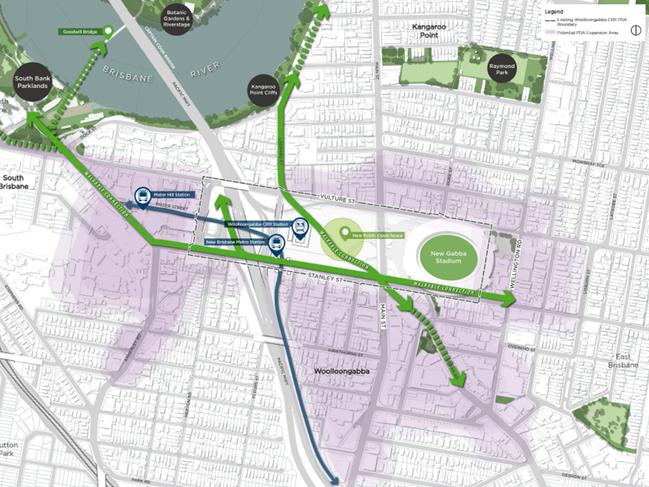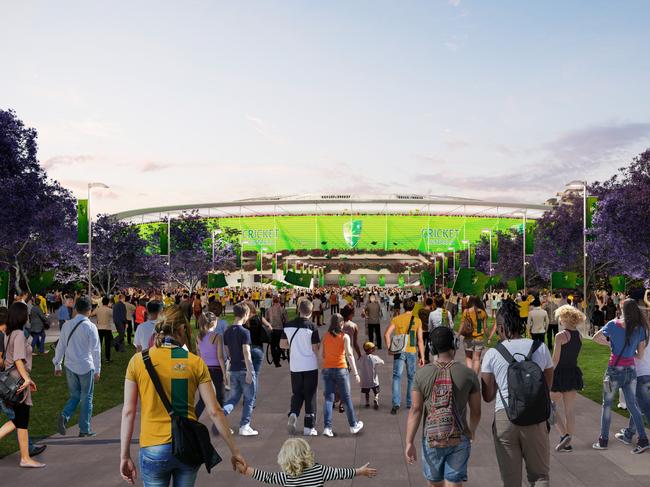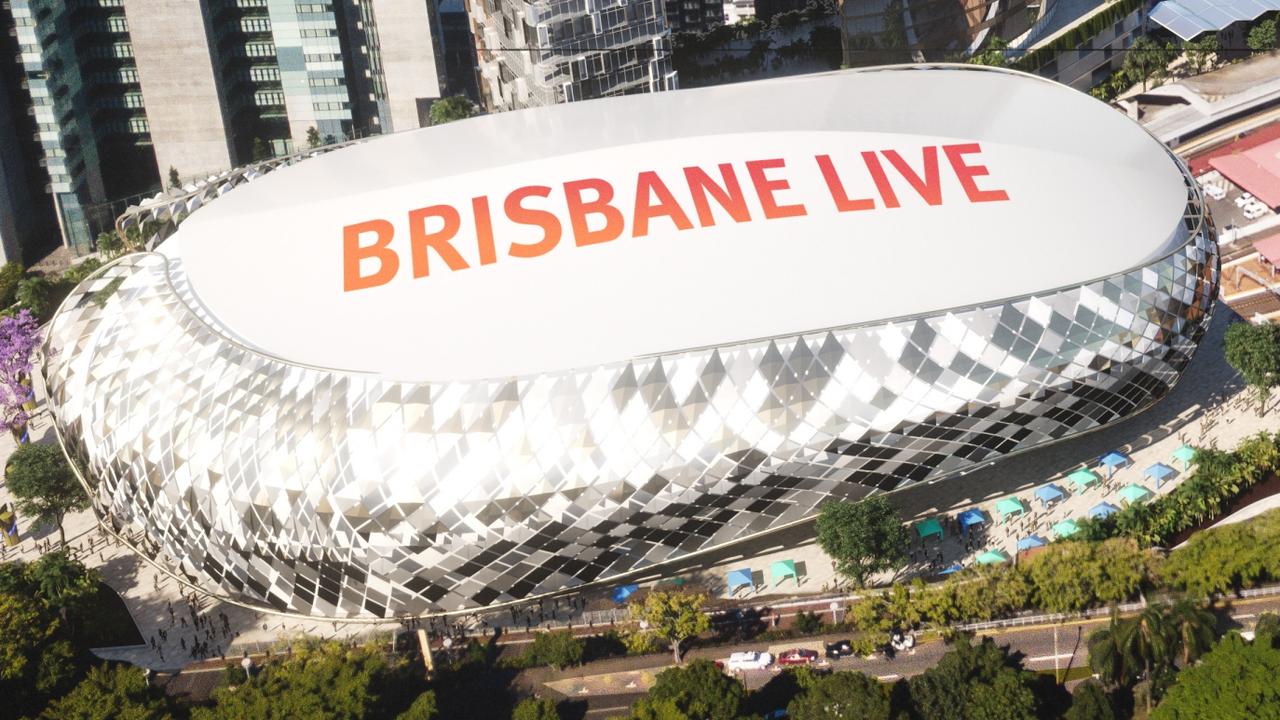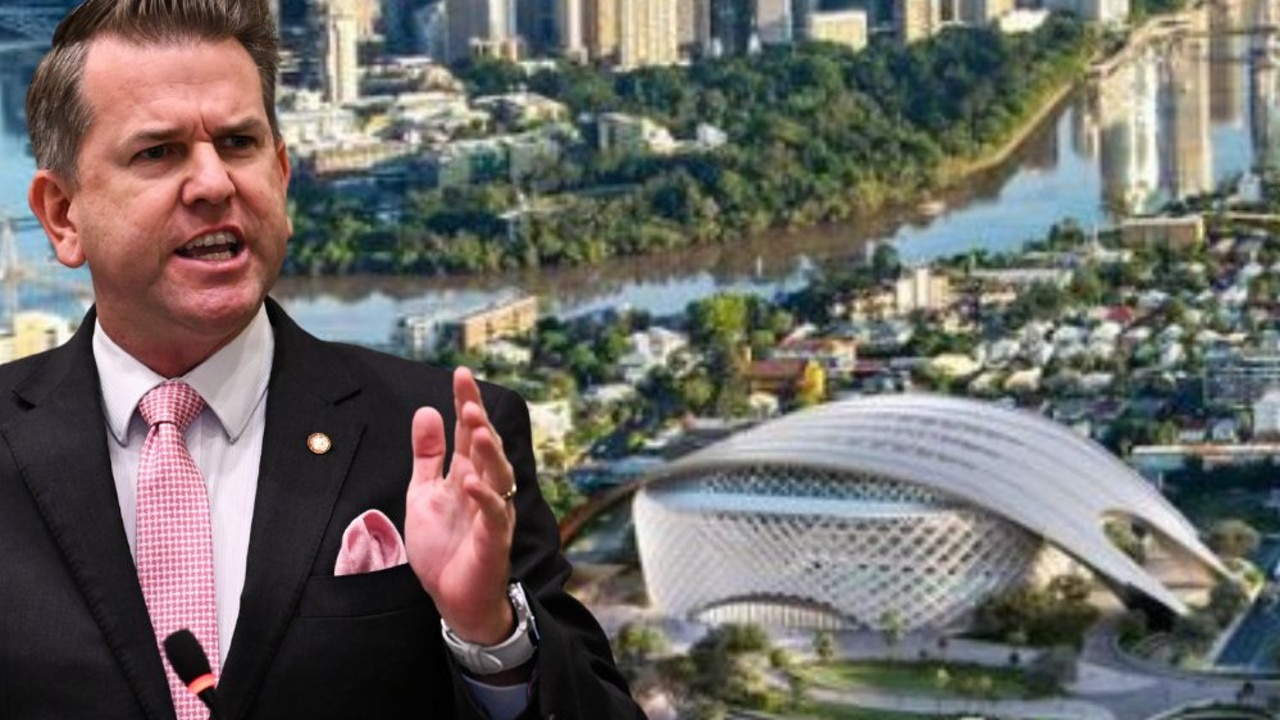Brisbane 2032 Games infrastructure deal to transform inner city
Kilometres of pedestrian walkways, thousands of new homes and connection with next-generation transport will be the legacy of Brisbane’s $7 billion Games infrastructure deal.
Future QLD
Don't miss out on the headlines from Future QLD. Followed categories will be added to My News.
Pedestrian walkways snaking across the city, thousands of new homes and a state-of-the-art Gabba stadium built from the ground up have been revealed as key legacies of the 2032 Brisbane Olympic and Paralympic Games.
The new 50,000-seat stadium will become the anchor point for a revitalised precinct throughout the inner city, including the expansion of Woolloongabba’s “priority development area” and active travel corridors linking with South Bank, the CBD and beyond.
New plans for the reshaping of Brisbane’s Olympic heartland emerged as Prime Minister Anthony Albanese travelled to Queensland on Friday for the official inking of the $7bn Games infrastructure deal with Premier Annastacia Palaszczuk.
The vision includes a new pedestrian walkway linking the Gabba via a bridge over Main St to Cross River Rail and Brisbane Metro, plus a fully walkable link from the Stanley St precinct to the CBD via the Brisbane City Council’s new green bridge at Kangaroo Point.
A walkable and active transport connection from the Gabba will also traverse Stanley St to South Bank, and connect to the Goodwill Bridge across to Riverstage.
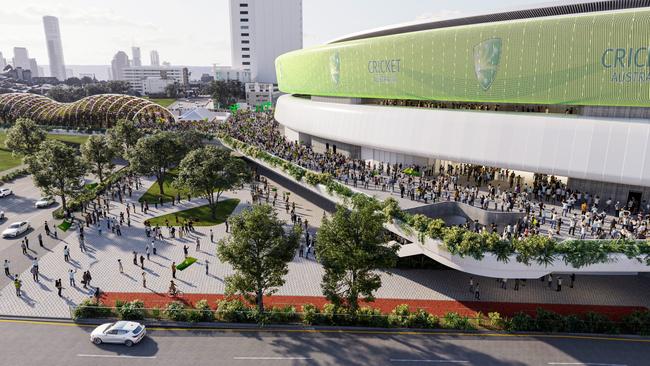
The pathways will extend all the way to existing links connecting Milton’s Suncorp Stadium, and across to Roma St where the new Brisbane Arena site will be constructed – creating interconnected active travel across the city.
Deputy Premier and Planning Minister Steven Miles said expanding the current PDA would allow for a more co-ordinated and integrated planning approach – likening it to how Expo 88 changed Brisbane.
“It’s fitting that we will extend the much-loved South Bank precinct to the Gabba and back to the city via the Gardens.
“The redevelopment will anchor major urban renewal and deliver more affordable housing, dining and retail.
“The Gabba will be more than just an events stadium. We want it to be activated 24/7 so that living near it will be exciting and fun.”
The state government said four options were considered for the Gabba redevelopment, given the complexity of the inner-city site a complete rebuild was more cost-effective.
“It’s no secret that Queensland is losing out on major sporting events already – and the tourism, jobs and investment that comes with them because the Gabba is not up to scratch,” Ms Palaszczuk said.
“When it’s done, this stadium will shine for Queensland, and so will the area surrounding it.
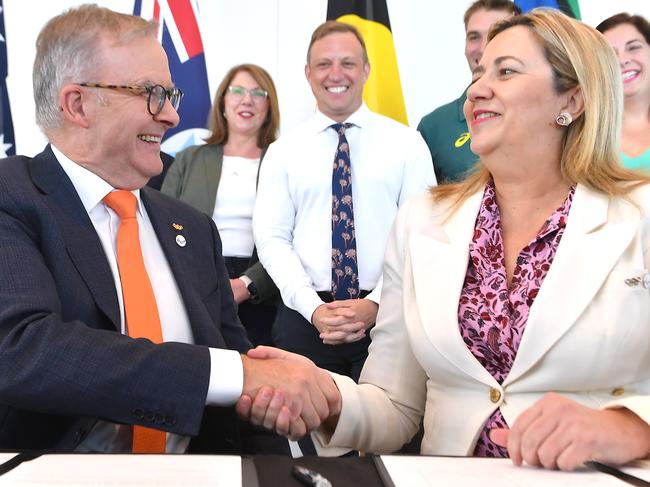
“Woolloongabba has the potential to be the next bustling precinct, but that can’t happen without a co-ordinated approach.
“It’s important we further capitalise on major transport projects already under way like Cross River Rail and Brisbane Metro.”
But Ms Palaszczuk was also forced to defend the significant cost increase to the Games – which had earlier been flagged as about $5bn, with the Gabba originally floated as costing about $1bn.
“The $5bn was without the full costings,” she said.
“There have been a whole lot of factors taken into account.
“Of course prices have gone up for commodities … but this is not unusual.
“This is happening for projects all around the world.”
Committee for Brisbane boss Barton Green said the city had an obligation “to put on the best Games we can”.
“These venues are being built for our people and our population, which will essentially double over the next 20 years,” he said.
“It’s entirely appropriate and responsible that we build sporting and entertainment venues for our fast-growing population to enjoy.
“The Games will benefit from these stadiums – but they are not being built for the Games.
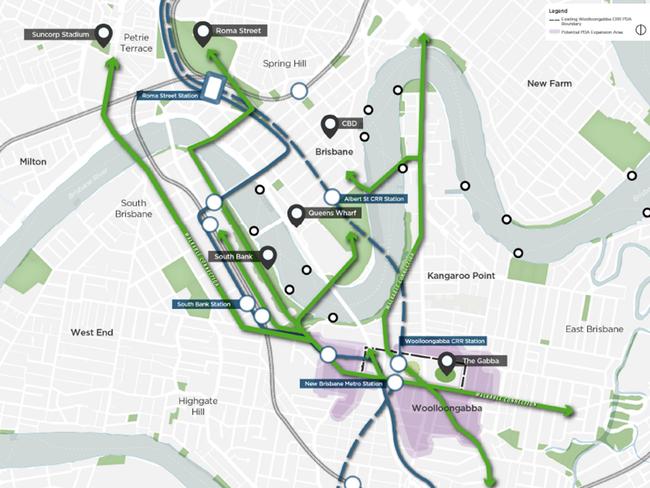
“They are being built for us.”
Mr Albanese said he was confident that the costs which had been outlined were adequate.
“This isn’t something that has been done on a coaster. This is something that’s been worked through by our respective governments,” he said.
“That’s why we will obviously have to account for this in our budget, and we wanted to get this done well in advance of our May budget.”
Ms Palaszczuk said under the terms of the agreement the Olympic and Paralympic infrastructure projects would be co-ordinated through the relevant federal and state government departments.
She also said capacity had been built into the agreement to account for any potential cost blowouts
Mr Albanese was flanked by a raft of federal ministers, including Sport Minister Anika Wells, Infrastructure Minister Catherine King and Treasurer Jim Chalmers.
“This is a great day for Brisbane, a great day for Queensland, but a great day for Australia as well,” he said.
“This agreement of $7bn shows what governments can do when they work together. It will benefit the whole state of Queensland but will also benefit our national economy.”
Under the terms of the deal the state government will fund a $2.7bn rebuild of a new Gabba, with construction planned to begin in 2026 and be completed in 2030.
The Commonwealth will provide $2.5bn for a 17,000- seat Brisbane Arena indoor entertainment venue at the proposed Roma St location, which will host swimming and water polo via a temporary pool during the Games. Construction is set to begin in 2027, and be finished by 2030.
A further $1.87bn in co-funding between the two governments will provide upgrades to nine existing venues and construct five new sites, including indoor sport centres at Breakfast Creek, Chandler, the Sunshine Coast and Moreton Bay, and the Redlands Whitewater Centre.
Australian Olympic Committee chief executive Matt Carroll said the funding agreement was great news.
“From the outset we have emphasised that the Olympics will be a catalyst for much needed community infrastructure, while bringing lasting benefits for tourism, jobs, economic growth and lifestyle benefits,” he said.
“The redevelopment of the Gabba is certainly welcome for the Olympics, but importantly it will be hosting major international and domestic sport well before the Opening Ceremony on July 23rd, 2032.
“And, of course, for decades after the Games.”
